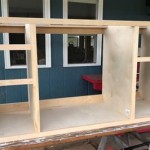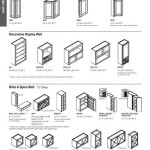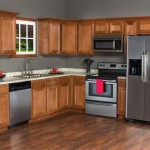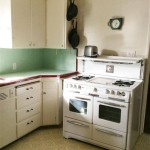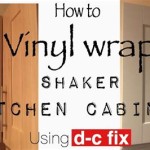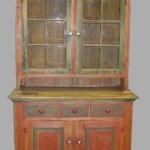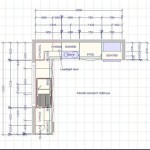Is LVT Good for Kitchens? Evaluating Luxury Vinyl Tile as a Kitchen Flooring Option
Selecting the right flooring for a kitchen is a crucial decision. The kitchen environment presents unique challenges due to its high foot traffic, potential for spills, and frequent temperature fluctuations. Luxury Vinyl Tile (LVT) has emerged as a popular flooring contender in recent years, prompting the question of its suitability for kitchens. This article will delve into the properties of LVT, compare its advantages and disadvantages concerning kitchen applications, and ultimately assess its overall efficacy as a kitchen flooring material.
LVT is a multi-layered synthetic flooring product designed to mimic the appearance of natural materials such as wood, stone, and ceramic tile. Its construction typically consists of a backing layer, a core layer (often made of dense vinyl), a decorative print film layer, and a protective wear layer. The wear layer is a transparent coating that safeguards the underlying design from scratches, stains, and general wear and tear. LVT is available in various formats, including planks, tiles, and sheets, which are installed using either a glue-down or click-lock (floating) method.
Durability and Resistance to Moisture
Kitchens are inherently prone to spills, splashes, and general moisture exposure. Therefore, a fundamental requirement for kitchen flooring is resistance to water damage. LVT, due to its synthetic composition, possesses excellent water resistance. Unlike hardwood or laminate flooring, LVT will not swell, warp, or rot when exposed to moisture. This characteristic makes it a strong candidate for kitchens where the likelihood of spills is high. The wear layer further enhances its resistance to stains from common kitchen substances such as oil, grease, and food particles.
The durability of LVT is also a significant factor in its suitability for kitchens. Kitchens typically experience higher foot traffic compared to other areas of the home. The wear layer of LVT plays a vital role in protecting the flooring from scratches, dents, and scuffs caused by dropped items, pet claws, and the constant movement of people and appliances. LVT is offered in varying wear layer thicknesses, measured in mils (thousandths of an inch). A thicker wear layer provides greater protection against wear and tear, making it a particularly desirable feature for kitchens. A wear layer of 12 mils or greater is generally recommended for residential kitchens to ensure long-term durability.
However, it is crucial to acknowledge that while LVT provides excellent water resistance, it is not entirely waterproof. In cases of prolonged standing water or flooding, water can seep beneath the seams or edges of the flooring, potentially leading to mold growth or damage to the subfloor. Proper installation and maintenance are essential to mitigate this risk. Glue-down LVT installations typically offer better water resistance than floating click-lock installations, as the adhesive creates a tighter seal between the flooring and the subfloor.
Comfort and Maintenance
Beyond durability, comfort is another important consideration for kitchen flooring. People often spend extended periods standing in the kitchen while preparing meals or performing other tasks. LVT, unlike hard surfaces such as ceramic tile or stone, offers a degree of cushioning underfoot. This inherent softness can reduce fatigue and provide a more comfortable experience for those who spend a significant amount of time in the kitchen. The core layer of LVT contributes to its overall resilience, making it less jarring on joints and muscles compared to rigid flooring materials.
The maintenance requirements of LVT are relatively simple and straightforward, contributing to its appeal as a kitchen flooring option. Regular sweeping or vacuuming is sufficient to remove loose dirt and debris. For more thorough cleaning, a damp mop and a mild detergent solution can be used. Unlike natural stone or hardwood, LVT does not require sealing or special cleaning products. Its stain-resistant properties also simplify the process of cleaning up spills and messes. However, it is important to avoid using abrasive cleaners or scouring pads, as these can damage the wear layer and dull the finish of the flooring.
While LVT is relatively low-maintenance, it is susceptible to certain types of damage. Heavy objects or sharp items can potentially puncture or scratch the surface of the flooring. Dragging heavy appliances across LVT should be avoided to prevent scratches. Additionally, prolonged exposure to direct sunlight can cause fading or discoloration of the decorative print film layer. Utilizing window coverings or applying UV-resistant films to windows can help mitigate this risk.
Aesthetics and Installation
The aesthetic versatility of LVT is a significant advantage for kitchens. LVT is available in a wide array of styles, colors, and patterns, allowing homeowners to achieve a variety of looks, from traditional to contemporary. It can effectively mimic the appearance of natural materials such as hardwood, stone, or ceramic tile, often at a lower cost. The realism of the printed designs has improved significantly in recent years, making it difficult to distinguish LVT from genuine materials in many cases. This allows for the creation of visually appealing kitchen spaces without the expense and maintenance associated with natural flooring options.
The installation of LVT can be relatively straightforward, depending on the chosen installation method. Click-lock LVT is often considered a DIY-friendly option, as the planks or tiles simply snap together without the need for adhesive. Glue-down LVT, on the other hand, typically requires professional installation to ensure proper adhesion and a smooth, even surface. Proper subfloor preparation is crucial for both installation methods. The subfloor must be clean, level, and dry to prevent imperfections from telegraphing through the LVT and to ensure a secure bond. Failing to properly prepare the subfloor can lead to issues such as unevenness, gaps, and premature wear and tear.
The cost of LVT varies depending on the quality of the material, the thickness of the wear layer, and the complexity of the installation. Generally, LVT is more affordable than natural stone or hardwood flooring. However, higher-end LVT products with thicker wear layers and more realistic designs may be comparable in price to some mid-range natural flooring options. Installation costs can also vary significantly depending on the chosen method and the complexity of the project. It is important to obtain quotes from multiple contractors and to carefully consider the overall cost of materials and installation before making a decision.
Heat Resistance and Underfloor Heating
While LVT offers many advantages, its heat resistance should be taken into account, particularly in kitchens where ovens and stoves generate significant heat. LVT is generally resistant to normal kitchen temperatures, but prolonged exposure to extreme heat can cause it to warp or discolor. It is important to ensure that LVT flooring is installed according to the manufacturer's recommendations and to avoid placing hot pots or pans directly on the surface of the flooring.
The compatibility of LVT with underfloor heating systems is another important consideration. Some LVT products are specifically designed for use with underfloor heating, while others are not. It is essential to consult the manufacturer's specifications to determine whether a particular LVT product is suitable for use with underfloor heating. If the LVT is compatible, it is important to follow the manufacturer's instructions for installation and operation to prevent damage to the flooring or the heating system. Improper installation or operation of underfloor heating can cause the LVT to expand and contract excessively, leading to issues such as buckling or cracking.
The type of underfloor heating system can also influence the performance of LVT. Electric underfloor heating systems typically produce a more consistent and even heat distribution than hydronic systems. This can help to prevent hot spots and uneven expansion of the LVT. Regardless of the type of system, it is important to maintain a consistent temperature and to avoid rapid temperature fluctuations, as these can stress the flooring and lead to premature wear and tear.
Ultimately, the decision of whether LVT is a suitable flooring option for a kitchen depends on individual needs and priorities. Its durability, water resistance, ease of maintenance, and aesthetic versatility make it a compelling choice for many homeowners. However, it is important to carefully consider its limitations concerning heat resistance and the potential for damage from sharp objects. Proper installation and maintenance are essential to ensure the long-term performance and appearance of LVT flooring in a kitchen environment.
What Is The Best Flooring For A Kitchen Tarkett

Wood Flooring Or Luxury Vinyl Tiles Lvt For Your Kitchen Dwf Blog Direct

Wood Flooring Or Luxury Vinyl Tiles Lvt For Your Kitchen Dwf Blog Direct

Lvt Flooring For Kitchens Does It Work Luvanto

The Best Flooring For A Busy Kitchen Mega

Is Vinyl Flooring The Best Choice For Kitchens

5 Reasons To Use Luxury Vinyl Tile In Your Kitchen

Is Lvt Flooring The Right Choice For Your Kitchen Or Bath Remodel

Kbbfocus Lvt Flooring The Height Of Luxury For Kitchens And Bathrooms

Kitchen Flooring Stylish Ideas For Your Home Amtico

